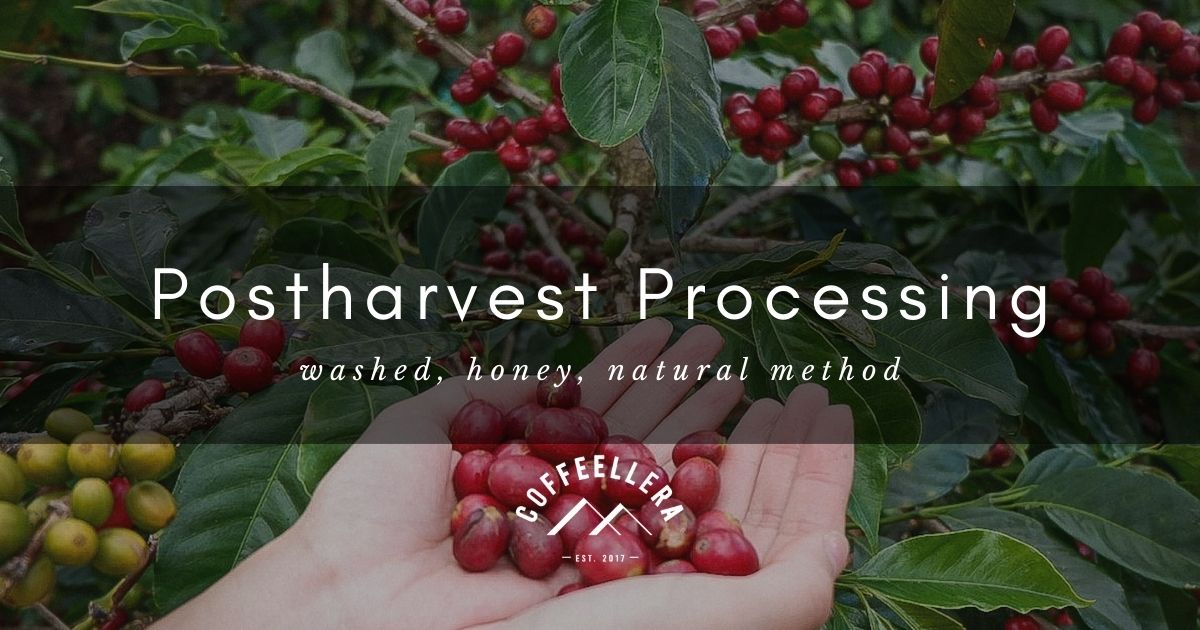
When you order a specialty coffee, you often see a lot of information labeled on the packaging. You see the washed process, honey, or natural. What does these mean and which one is for you?
3 Common Postharvest Coffee Processing Methods
There are other coffee processing, alternatives, or even experimental, but there are three common process.
As with any quality coffee producing farms or cooperatives, harvesting ripe coffee cherries are hand-picked. Cherries are ripe when they are red, dark red, yellow, or orange depending on the coffee variety.
Harvested ripe coffee cherries are rinsed and submerged in water. Anything that floats is to be discarded. These floaters are defective beans, leaves, branches, and other foreign objects.
1. Washed Process Coffee
Washed process coffees are done by separating the beans from the fruit or the skin, fermented, and washed. The process starts with de-pulping. It is the squeezing or separation of beans from the skin. De-pulping happens after 8-12 hours of the harvest. The pulped beans are left with mucilage and are fermented and removed through the washing process. After the beans are washed, they are dried until they reach the desired moisture content. Drying can reach up to two weeks depending on the weather.
Washed process are best done in areas which water is abundant.

2. Honey or Pulped Natural Process Coffee
The honey process is similar to the first couple of stages of the washed process. After the coffee cherries are pulped, they are laid to dry right away while its mucilage is still attached. The name honey comes from its sticky texture in the drying process. Drying can reach two to three weeks depending on the weather.
Honey process is best done on dry climate.

3. Natural or Dry Process Coffee
The natural or dry process is done by drying the coffee cherries (while skin is still attached). Natural process coffee is the most eco-friendly but can be laborious especially in a wet climate.
Natural process is best done on dry climate and when water is scarce.

How Coffee Processing Affects Coffee Flavor?
The method chosen by a farmer will have an impact on the final flavor of coffee.
Washed Process
Washed coffee allows the acidity to shine. So in theory, you get floral, sour, citrus fruit profile.
Honey Process
The level of mucilage attached influences the sweetness and body of the coffee. In theory, it has a large range of flavor profiles. If it has more mucilage, it can lean towards fruity notes.
Natural Process
The natural process increases the overall sweetness and overpowering the perceived acidity because of the mucilage and skin attached. Theoretically, the flavor profile is fruity, winey, and fermented.
Find a coffee process that you like, but we encourage for you to try them all.
Source:
https://perfectdailygrind.com/2018/05/why-are-some-coffees-more-acidic-than-others-a-brew-roast-guide/
https://perfectdailygrind.com/2016/07/washed-natural-honey-coffee-processing-101/
https://perfectdailygrind.com/2018/01/a-producers-guide-to-choosing-a-processing-method/
https://sca.coffee/




